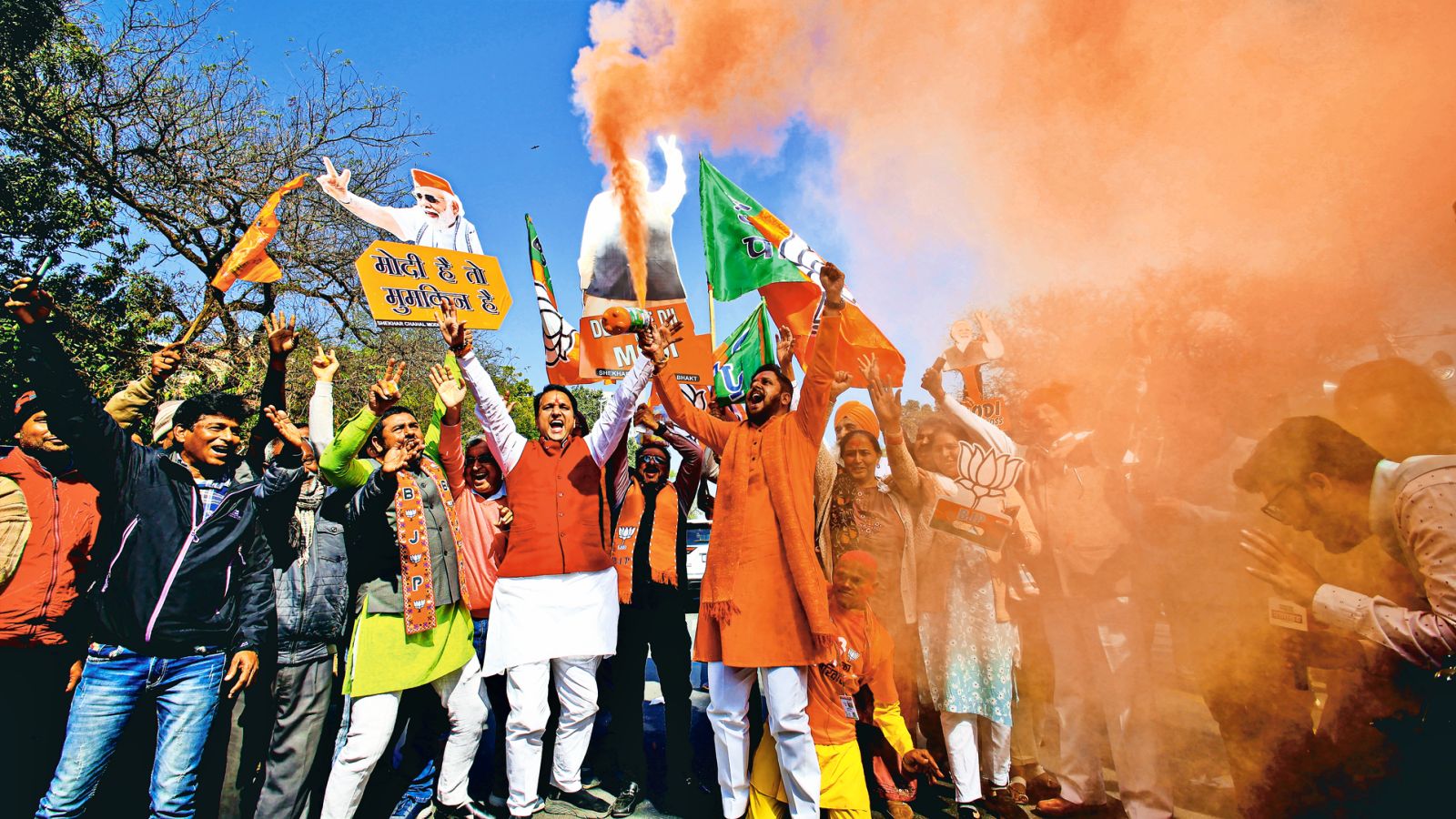 |
|
The Bharatiya Janata Party's (BJP) recent electoral triumph in Delhi marks a significant turning point in the party's history in the nation's capital. After a 27-year hiatus from holding a majority government, the BJP's resounding victory signifies a remarkable resurgence of their political influence in the region. This win carries historical weight, echoing back to the party's precursor, the Bharatiya Jana Sangh (BJS), and its first taste of power almost six decades ago. The journey from the Delhi Metropolitan Council of the 1960s to the present-day Legislative Assembly is a testament to the BJP's resilience and adaptability within the dynamic landscape of Delhi's political arena. The article highlights the evolution of the BJP's presence in Delhi, tracing its roots back to the Delhi Metropolitan Council, a body with limited legislative powers, established in 1966.
The BJS's formation of a majority government in the Metropolitan Council from 1967 to 1972, under the leadership of Lal Krishna Advani, represents a pivotal moment. This period laid the groundwork for the BJP's subsequent rise to prominence, not only in Delhi but across various Indian states. Advani's tenure as chairman of the council marked a significant milestone, showcasing the party's early organizational prowess and ability to garner public support. The subsequent dissolution of the Metropolitan Council in 1990 paved the way for the establishment of the Delhi Legislative Assembly in 1993, ushering in a new era of governance for the city.
The formation of the Delhi Legislative Assembly in 1993 brought with it both opportunities and limitations for the BJP. While Madan Lal Khurana became the first Chief Minister from the BJP, his tenure was marked by controversy, leading to his resignation amidst the hawala scandal. Sahib Singh Verma and later Sushma Swaraj followed, but the BJP's time in power remained relatively short-lived, ending in 1998 due to issues surrounding inflation. The subsequent period witnessed a prolonged period of Congress rule under Sheila Dikshit, pushing the BJP to the political periphery for nearly three decades. This extended period in opposition highlights the challenges the BJP faced in navigating the complexities of Delhi's political environment and maintaining consistent popular support.
The article emphasizes the limitations imposed on the Delhi Assembly by Article 239AA of the Indian Constitution. This article explicitly restricts the Assembly's legislative powers over crucial matters such as law and order, land, and police. Former Lok Sabha and Delhi Assembly secretary S K Sharma's insights shed light on the political dynamics of the time. He recounts the aspirations of elected officials within the Council to expand their powers, reflecting the ongoing tension between the Assembly's limited jurisdiction and the demands for greater autonomy. The initial Assembly operated within these constraints, acknowledging its role as a body with less authority compared to other state legislatures.
The historical overview presented in the article also traces the evolution of Delhi's governing structures. The Delhi State Legislative Assembly's initial establishment in 1952 under the Government of Part-C States Act, 1951, and its subsequent abolition in 1956, underscores the fluctuating political landscape and the gradual process of evolving democratic structures in Delhi. The introduction of the Metropolitan Council in 1966 marked a transition toward a more formalized structure with some power of recommendation, providing a prelude to the full-fledged Legislative Assembly's establishment in 1993. The narrative underscores the continuous struggle for greater political autonomy and legislative power for Delhi.
The BJP's recent victory, therefore, represents a culmination of their sustained efforts and strategic maneuvering within the context of Delhi's complex political history. The return to power after such a long absence is not only a testament to their organizational strength and popular appeal but also a reflection of the shifting political tides in the city. The presence of the sons of former Chief Ministers Harish and Parvesh in the incoming Assembly speaks to the continuity of political dynasties, adding another layer of complexity to the unfolding political narrative. The BJP's future trajectory in Delhi will undoubtedly be shaped by its ability to address the concerns of its constituents while operating within the limitations of the existing constitutional framework.
Source: BJP’s Delhi journey: From Metropolitan Council in ’60s to staying out of power for 27 yrs
